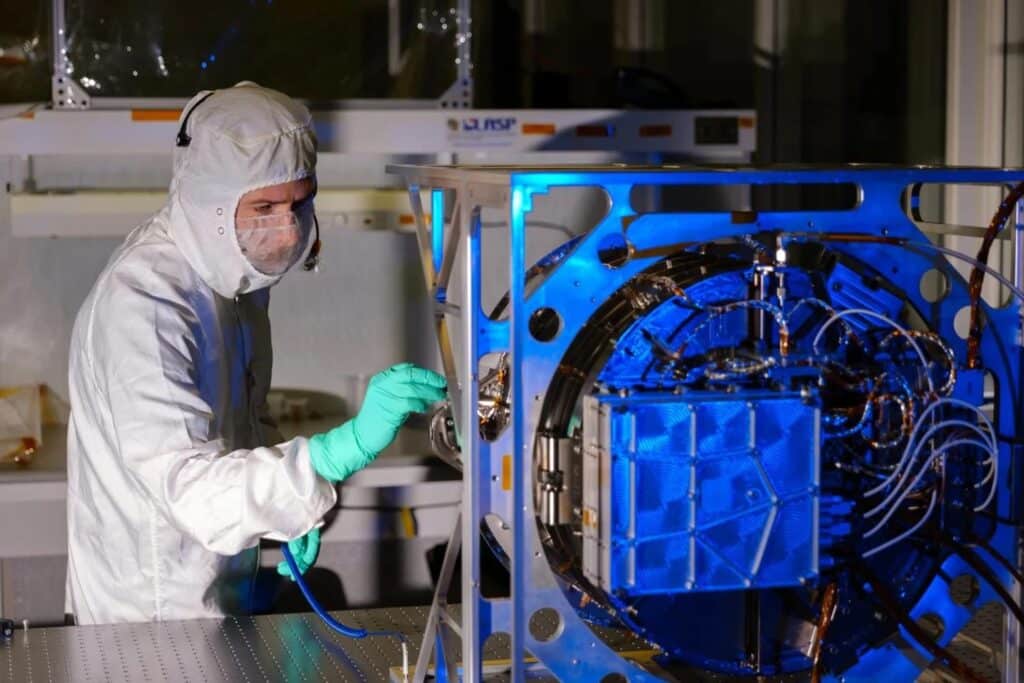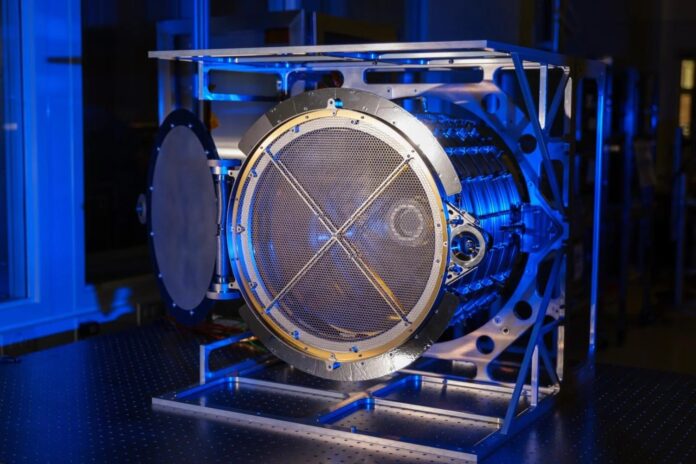NASA is gearing up to launch a spacecraft next year to collect a bit of stardust – the tiny bits of matter that flow through the Milky Way Galaxy and were once the initial building blocks of our solar system.
The mission is called the Interstellar Mapping and Acceleration Probe (IMAP), and its primary objective is to study the heliosphere – a massive sun-created bubble that surrounds our solar system. This bubble acts as a shield that protects Earth and other planets from cosmic radiation that enters our solar system from outer space.
The mission will carry 10 scientific instruments for in situ and remote observations. One of them is the Interstellar Dust Experiment (IDEX), which will detect and analyze in great detail the composition of hundreds of interstellar dust particles over a two-year mission.
IDEX will also detect thousands of interplanetary dust particles shed from comets and asteroids. The instrument is shaped like a large drum and weighs 47 pounds.
“They’re [dust particles] little packets of information from long ago and far, far away,” said Scott Tucker, the project manager for IDEX at the University of Colorado, Boulder.

Scientists previously thought these dust particles were just mere nuisances that interfered with their accurate measurements of star distances. However, these tiny cosmic flecks have proven to be valuable sources of information regarding the formation of galaxies, molecular clouds, and planets.
These cosmic flecks form in stars and are blasted into space during explosive supernova events. As they travel through the space between stars, they carry with them a treasure trove of information about the formation processes of their stars, as well as other phenomena that they encounter along the way.
“These dust particles were born in supernova explosions; most of them have been altered as they traveled in interstellar space, but they’re still the closest material we have for understanding the original building blocks of the solar system,” said Mihály Horányi, principal investigator for IDEX and a professor in LASP and the Department of Physics at CU Boulder. “Detecting and analyzing them in space opens a new window to the universe.”
Capturing these interstellar dust particles is not easy, as they are so rare and incredibly tiny. In fact, some of them may only measure a few millionths of an inch wide. They also tend to travel at extremely high speeds, sometimes exceeding 100,000 mph (160,000 km/h), making it challenging for scientists to study them in depth.
“The main challenge with IDEX has been what engineers call ‘dynamic range,'” Tucker said in a statement. “We’ve got to take both really fast and large particles and smaller and slower particles and measure them with the same instrument.”
The IDEX is slated to launch in spring 2025 and will be heading towards Lagrange Point 1, which is located at a distance of about 1 million miles (1.6 million km) from Earth. Once it reaches its destination, the IDEX will open its 20-inch-wide (51 centimeters) aperture to capture dust particles that are moving at high speeds.
As these grains crash into the back of IDEX, they will vaporize into “a cloud of ions” that the instrument will then analyze. It will record how fast these particles are traveling and from where and what they’re made of.
Since these grains are spread so thin in our solar system, scientists say the instrument may only collect a few hundred of them during its operational lifetime.
IDEX, along with a plaque engraved with the names of at least 87 team members, was loaded onto a delivery truck last week. The science instrument and plaque are headed to the Johns Hopkins University Applied Physics Laboratory in Maryland, where they will be installed on board the IMAP spacecraft. The mission’s launch is scheduled between April and May next year.
